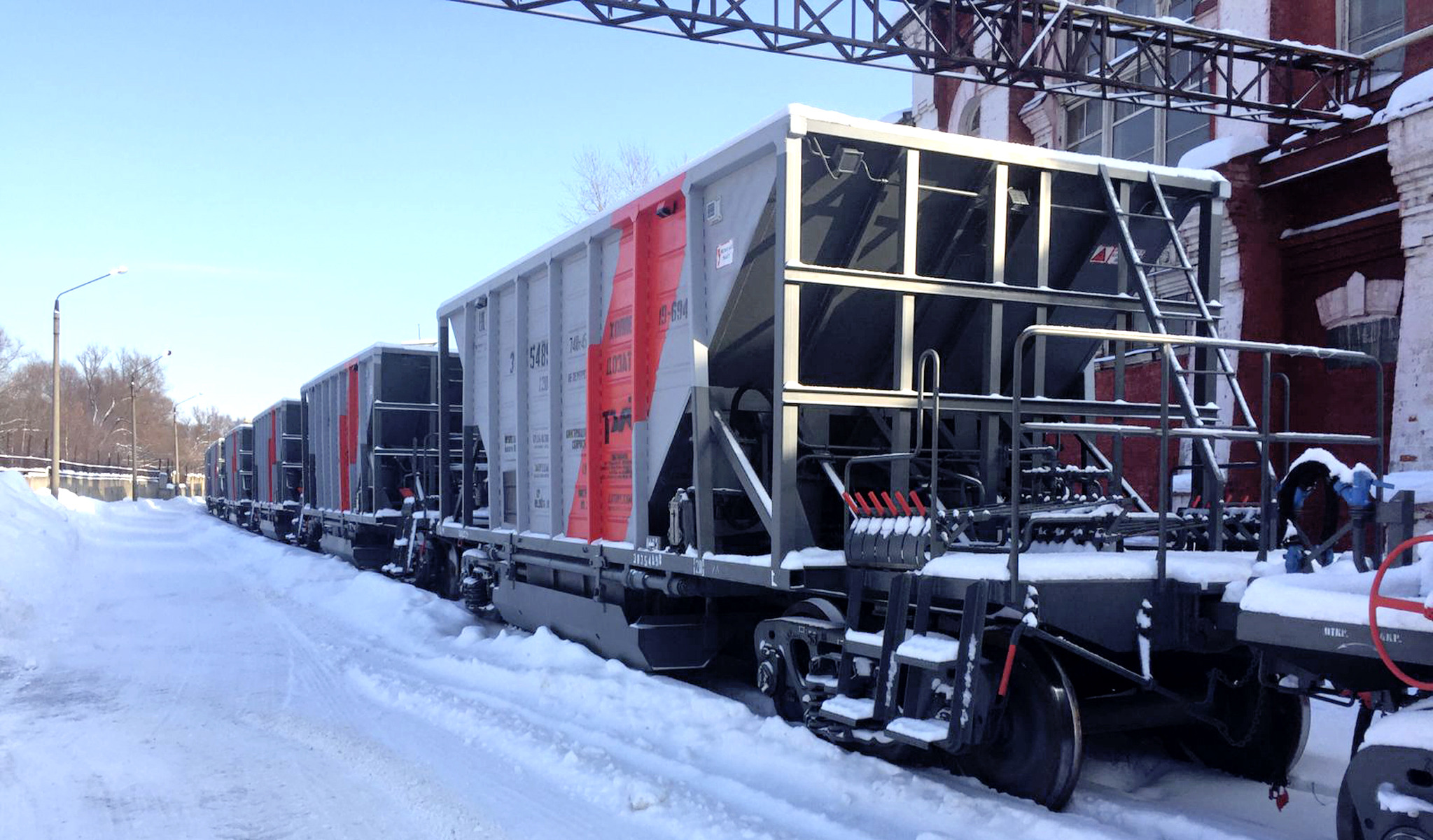Russia: In early 2022, Sinara Transport Machines (STM) handed over 162 new-generation hopper batchers to Russian Railways (RZD), which should significantly increase the productivity of track operations. The rolling stock should replace the serial railcars of VPM-770 model.
Creation of the vehicle
As of the beginning of 2022, RZD has more than 12,000 hopper batchers in its fleet, used for transportation of crushed stone for track works. Improving the efficiency of track facilities maintenance is one of RZD’s strategic goals, which should contribute to the growth of transportation intensity.
The task of developing a new hopper batcher was set by RZD in its technical requirements in 2020. It assumed that the new machinery, in comparison with the commercially available hopper batcher VPM-770, would be 5 m3 more capacious and its load capacity would be 5 t higher. One of the other important elements of the design task was to ensure the transition to cassette-type bearings in order to increase the overhaul intervals.
In the fall of 2020, draft design documentation was developed, and in 2021 RPM Group (part of STM) presented a new 19-6940 model of hopper batcher with increased capacity on 18-194-1 bogies. Then the railcar was tested and in December 2021 received a certificate of conformity, which gave it admission to run and allowed the start of batch production.
Key features
Four-axle 19-6940 railcar is produced at Yaroslavl’s branch of Remputmash Plant (part of RPM Group_ is and designed for transportation of all types of ballast, not requiring special protection from precipitation, with 5-70 mm grain size. It has higher load capacity and body wear resistance, as well as simplified operating equipment with low non-ferrous metal content to ensure vandal resistance. Its design provides for the safe transportation of goods and eliminates maintenance in transit. The rolling stock and its components are manufactured in the “UHL” climatic version of category 1, according to GOST 15150-69.
Digitalization technologies of the railcar are worthy of attention. For example, the hopper is equipped with a GSM/GPS-based control sensor – an autonomous device that allows tracking the location of the wagon in the on-line mode. It is powered by three sources: power cell, battery and photocell.
 Interface for the 19-690 hopper batcher geolocation control (enlarge). Source: RPM Group
Interface for the 19-690 hopper batcher geolocation control (enlarge). Source: RPM Group
Radio-frequency identification sensors (RFID) are also used on the parts of the railcar (wheelsets, bolsters, solebars, frame and body). They allow to monitor the completeness of wagon parts in operation and during repair and to create databases of freight wagon components with all the necessary info on the freight wagon with the minimization of human factor. The RFID are also responsible for the creation of identification systems resistant to the environment, with not only a high degree of safety but also with a guaranteed high level of protection against forgery.
The lighting system used to illuminate the work area and grounds provides standard lighting and creates conditions for safe operation in accordance with GOST R 54984-2012. The system includes 5 LED lights. They are powered by a pneumatic line-driven generator.
The weight of the loaded hopper batcher is 100 t, so to provide increased capacity the type 3 bogies of an 25-t axle load and center plates with a diameter of 350 mm were used. The bogie wheelsets are equipped with tapered roller bearing, thereby a new railcar requires much less frequent maintenance. The overhaul interval for bogies is 500,000 km.
Economic effect
The analogue and prototype of 19-6940 hopper batcher is VPM-770 model, which has been in series since 2004. The new hopper has a number of advantages:
-
- bigger body volume, which increases the weight of the transported cargo by 12.5%;
- smaller number of purchased wagons by increasing the weight of cargo at full load and reducing the number of wagons in a tow from 20 to 18 units;
- higher speed of unloading ballast materials by reducing the track maintenance timeslots due to a reduction in the number of wagons in the tow and increasing the size of the unloading hatches;
- service life extended from 28 years to 40 years;
- first maintenance mileage increased from 210 thsd to 500 thsd km.
 19-6940 hopper batcher by the Remputmash Plant (Yaroslavl’s branch). Source: RPM Group
19-6940 hopper batcher by the Remputmash Plant (Yaroslavl’s branch). Source: RPM Group
RZD will primarily benefit from using 19-6940 in the formation of hopper-batcher ‘unit trains’. Normally, such train consists of 58 wagons, providing transportation of 2,320 t of cargo. With the formation of the ‘unit train’ of 19-6940 wagons, the volume of crushed stone transportation in one train increases to 290 tons (by 12.5%). As a result, one less train is required for a stretch of more than 9 km when carrying out repair work in the closed haul mode. This leads to reduced labor costs for loading, lower costs for train traction, freeing up a train path in the traffic schedule, reducing time and increasing productivity during the overhaul works on the track.
Authors:
Kirill Epshtein, General Director, RPM Group
Dmitri Morichev, Executive Director, Remputmash Plant (Yaroslavl’s branch)













